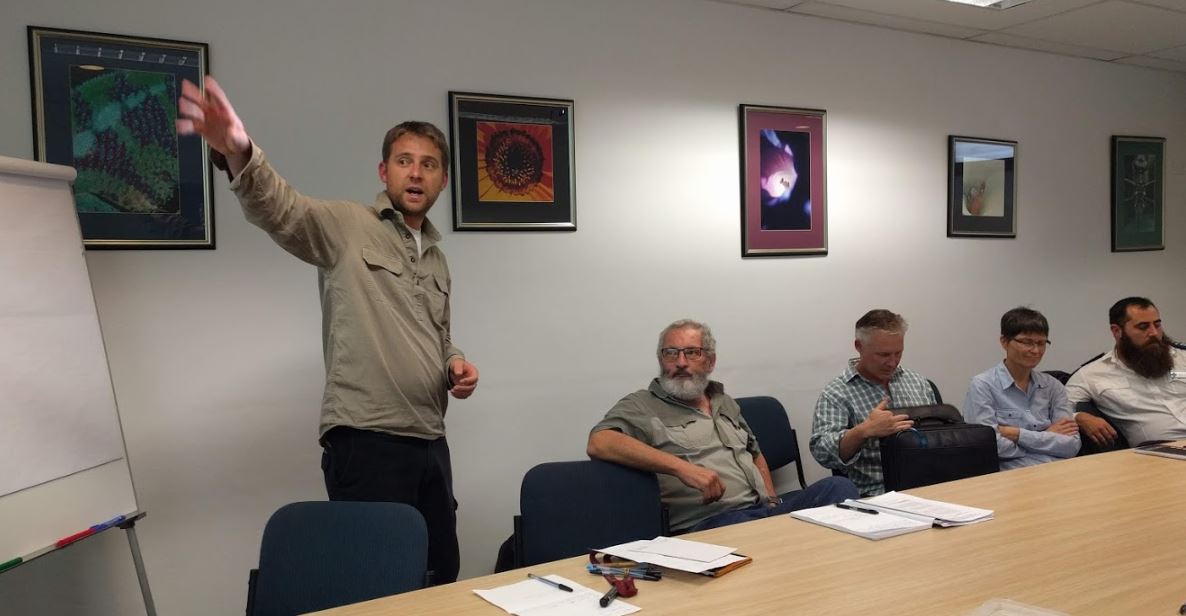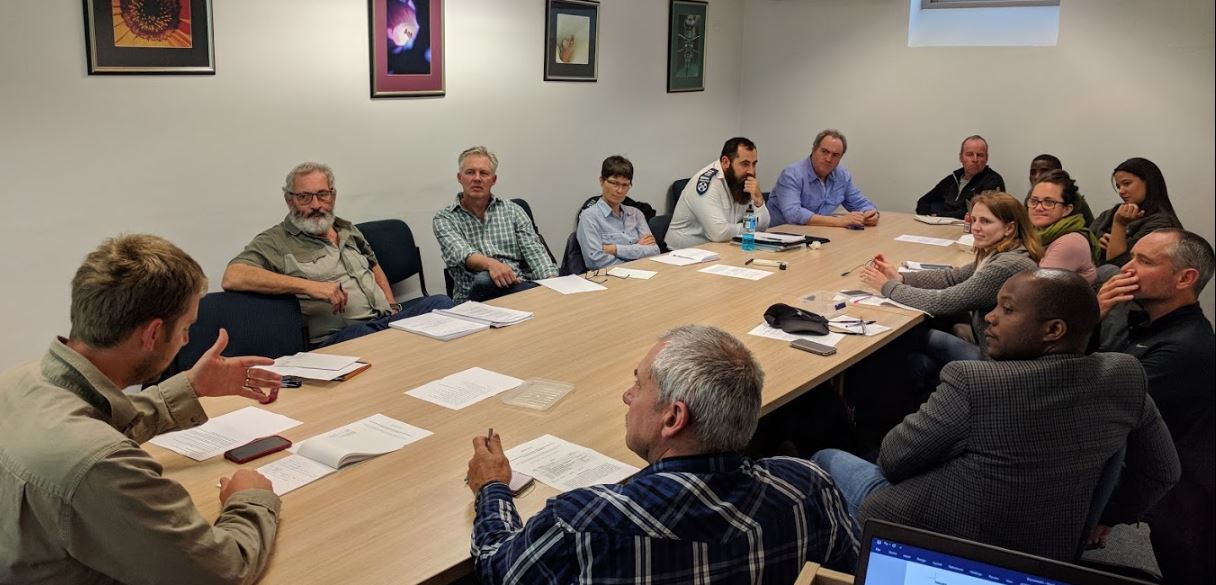What is a vertebrate biocontrol?
This would be a vertebrate that you could use to control an invasive species. An example might be using cats to control rats or mice, or cane toads to control cane beetles. Classically, this strategy has gone terribly wrong for a number of reasons. Typically, there are lots of non-target species that are impacted by these predators, which can breed and have severe impacts. The pathway of biological control is at the root of many classic invasions.
However, it is not necessary to introduce breeding pairs of vertebrates, single sex animals will often have the same effect but are unable to have a lasting impact as seen in invasive populations that result from the biological control pathway. This workshop was convened to brainstorm ideas of what vertebrate biocontrol agents might work in South Africa.
Left to Right: Ben Allen, John Measey, Alwyn Marais, Justin O’Riain, Riaan Van Der Walt, Dave Richardson, Sarah Davies, Chris Wilke, Debbi Winterton, Chandre Rhoda, Nicola Bredenkamp, Jaco Van Deventer, Gavin Bell, Khathutshelo Nelukalo & Mfundo Tafeni.
In the workshop ran by Ben Allen (see here) and myself, we brought together government, non-government, university and agency practitioners and researchers involved in the control and management of invasive species in the Western Cape to discuss opportunities and issues associated with the potential use of vertebrate biocontrols. The intent of the workshop was to provide an overview of invasive species issues in the Western Cape, learn about recent advances in invasive species management in Australia, and discuss how these new tools and approaches might be useful to South African situations. The goal of the workshop is to identify any issues that may arise from the use of these tools and identify possible applications (if any) in the Western Cape.
There were some great discussion points from the participants, and we all left thinking again about the potential for using vertebrates as biocontrol.



